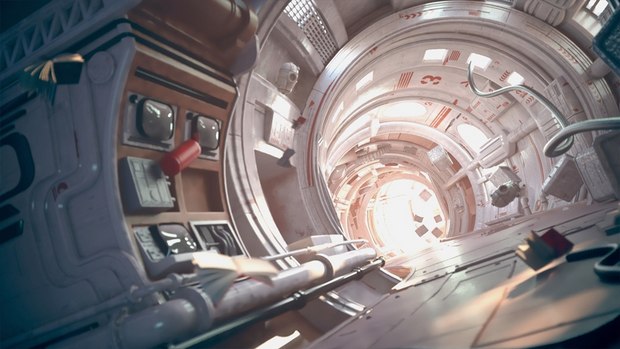Render OpenVDB simulations directly in Foundry’s industry-leading compositor; deep volumes now supported.
LOS ANGELES -- Chaos Group has announced V-Ray 3.5 for NUKE, a major update to its production-proven ray traced renderer used on films like Spectre and The Revenant. New support for volumetric rendering and deep compositing workflows have greatly expanded V-Ray for NUKE’s core capabilities, adding flexibility to film and TV productions.
Now for the first time, NUKE artists can use the V-Ray Volume Grid node to import and render fire, smoke and other fluid simulations as OpenVDB files from applications like Houdini. This gives compositors direct control over lighting and the final look of volumetric effects for better integration. For even more control, volumes rendered in V-Ray for NUKE are fully compatible with deep compositing.
Deep rendering capabilities have also been greatly improved in this update, allowing artists to fully adopt deep compositing workflows. With V-Ray for NUKE deep data can be generated directly in NUKE, helping artists save disk space and file load times.
“V-Ray for NUKE has expanded what I can do as a creative director,” Framestore executive creative director William Bartlett commented. “At Framestore, we’ve started applying it to more projects, as it provides greater control over lighting, shadows and atmospheric effects. Deep compositing and full 3D volumes are a great next step.”
 New Features and Improvements Include:
New Features and Improvements Include:
- Volume Grid – Import and render volume simulations using industry-standard volume formats, including OpenVDB, Field3D, and Phoenix FD.
- Deep Rendering – Improved deep rendering capabilities with support for deep volumes, offering full control over 3D depth information.
- V-Ray Denoiser – Automatically reduce noise for cleaner renders. Denoise individual render elements, apply denoise masks and denoise final deep composites.
- Light Cache GI – Speed up renders with V-Ray's unique global illumination method. Enable the new Adaptive Lights algorithm to make it even faster.
- Improved Render Elements – Render elements generated in V-Ray for NUKE or rendered in V-Ray Standalone can now be used interchangeably. In addition, all render elements can be cached with a single render.
- Triplanar texture – Apply seamless textures to complex objects without UVs.
- V-Ray Falloff texture – Control an object’s shading effects in relation to the camera. Use NUKE Curves for even more control.
- V-Ray Clipper – Create quick sections and cutaways at render time using a clipping plane or mesh object.
- V-Ray Spot Light – Create spotlights with textured projections, barn door controls and soft shadows.
“Deep compositing workflows have gone from good idea to industry-standard in the film and TV industries,” said Jody Madden, Chief Product and Customer Officer at Foundry. “Incorporating V-Ray's production-proven rendering capabilities into Nuke's deep compositing workflow will save artists lots of time, and that's what we want when we work with other companies.”
V-Ray 3.5 for NUKE is available now and is a free update for V-Ray 3.x for NUKE customers. A V-Ray for NUKE Workstation license can be purchased for $1,040 through select resellers. This includes one floating user license and one floating render node. V-Ray for NUKE can render on existing V-Ray 3.x for 3ds Max and Maya render node licenses.
Source: Chaos Group








